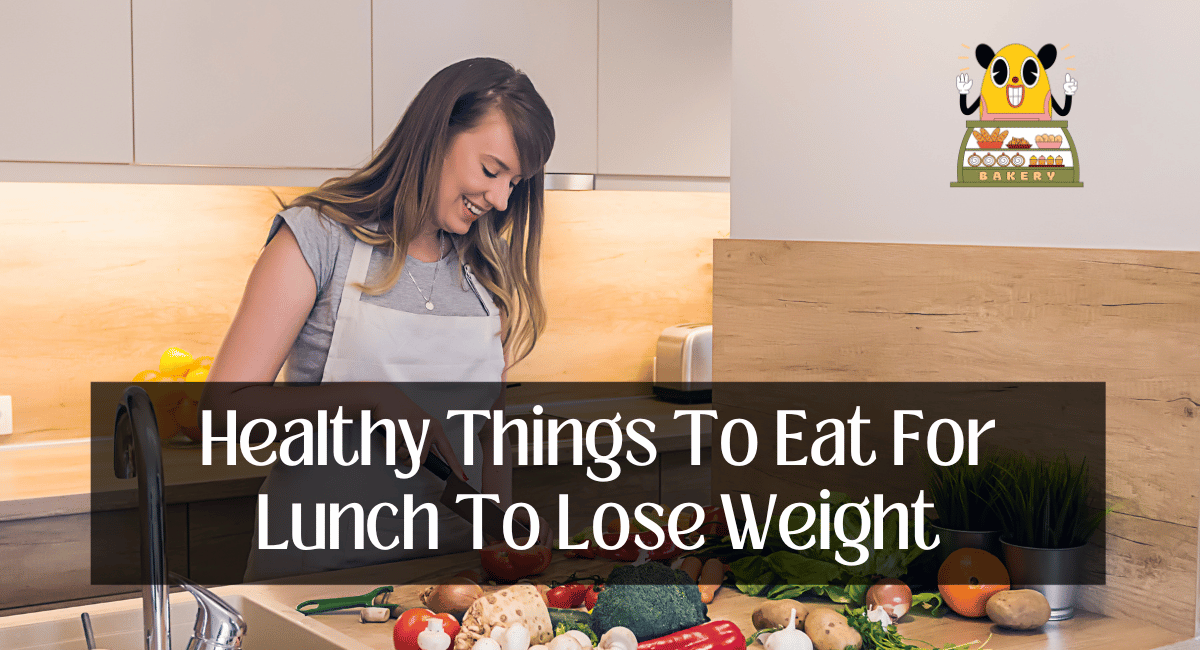When attempting to lose weight, it is important to prioritize nutrient-rich, satiating foods that provide necessary nutrients while limiting calorie intake. Here is a list of lunch options to aid your weight loss efforts. This article, will explore healthy things to eat for lunch to lose weight.
Healthy Things To Eat For Lunch To Lose Weight
1. Salad Containing Lean Protein
A salad can be a refreshing and satisfying meal option. Start with a base of nutrient-dense leafy greens, such as spinach, kale, or various greens. These vegetables contain vital vitamins, minerals, and fiber. Add a lean protein source to your salad, such as grilled chicken, turkey slices, tofu, or legumes, to make it more satisfying. During weight loss, protein helps you feel satisfied and supports muscle maintenance. Include a colorful assortment of vegetables, such as bell peppers, cherry tomatoes, carrots, and cucumbers, to enhance the flavor and nutritional value. For a tangy kick, dress your salad with a vinaigrette prepared from healthy oils, such as olive oil, combined with balsamic vinegar or lemon juice.
2. Wrap Of Grilled Veggies
This option combines grilled vegetables’ nutritional value with a whole-grain tortilla’s practicality. Grilling vegetables like zucchini, bell peppers, and eggplant brings out their natural sweetness and flavors. The vegetables are then enveloped in a whole-grain tortilla, which provides sustained energy via complex carbohydrates and fiber. Add a lean protein source, such as grilled chicken or hummus, to complete the dish for a vegetarian option. A small amount of low-fat cheese can add flavor without overwhelming your caloric intake.
3. Quinoa Salad
Quinoa is a protein-rich grain that makes for an excellent meal bowl base. Layer cooked quinoa with roasted sweet potatoes, broccoli florets, and ripe cherry tomatoes. These vegetables provide an assortment of vitamins, minerals, and antioxidants. Add shrimp, chickpeas, or lean beef fillets that have been grilled to increase the protein content. A drizzle of olive oil or a light vinaigrette can keep the flavors light and harmonious.
4. Stir-Fried Vegetables
A vegetable stir-fry is a vibrant and colorful method of consuming vegetables. Choose a variety of vibrant vegetables, such as broccoli florets, snap peas, julienned carrots, and rich bell peppers. Stir-frying cooks vegetables rapidly while preserving their texture and nutrients. Use a dash of healthy oil, such as olive or avocado to prevent sticking and add a touch of richness. Add cubes of tofu, thinly sliced beef, or diced chicken breast for protein. Control the sodium content by using low-sodium soy sauce or other light sauces and regulating the volume.
5. Combo Soup And Salad
This dish blends the warm, nourishing qualities of a broth with the crispness of a salad. As the main dish, choose a soup with broth, like a hearty lentil or chicken veggie soup. There is protein, fiber, and a variety of veggies in these stews. Mix the soup with a salad of mixed greens, thinly sliced veggies, and a lean protein source like grilled chicken or hard-boiled eggs. Keep the condiment on the side and use it in small amounts to add taste without eating too many calories.
6. Greek Yogurt Dessert
A Greek yogurt parfait has a creamy texture and the fresh taste of fruit for a lunch that is lighter but still filling. Choose Greek yogurt without fat as the base because it has less protein and fat. Fresh berries like strawberries, blueberries, and raspberries give the yogurt parfait more antioxidants and a natural taste. Add nuts, like almonds or walnuts, between the layers for a delicious crunch and healthy fats. Spread granola all over the dish to give it texture and taste.
7. A Sandwich Without Bread
This sandwich features the health benefits of whole-grain bread and lean protein. Start with a slice of whole-wheat bread as the base. Top it with turkey breast or cured salmon, both excellent protein sources with minimal saturated fat. Add a colorful assortment of crisp vegetables such as lettuce, tomato segments, cucumber rounds, and red onion for crispness and freshness. The open-faced design aids in portion control while allowing you to enjoy a visually appealing and satisfying meal.
8. Protein-Rich Salad
A lean protein salad goes one step further than the standard idea by putting the focus on protein. Start with a variety of greens or the leafy veggies you like best. Include a range of lean protein sources, such as grilled chicken fillets, thin slices of turkey, and water-packed tuna in a can. Add beans, lentils, or nuts to your diet, which will give you more protein, fiber, and good fats. Choose a simple olive oil and vinegar dressing to keep the salad light, or add a squeeze of lemon for a tangy touch.
9. Handmade Vegetable Pizza
Your pizza appetite can be satisfied with a healthier twist. As a crust, begin with a whole-grain tortilla or pita. Spread a layer of herb- and spice-infused tomato sauce on the plate. Use a number of colorful vegetables, such as bell pepper segments, red onion rings, and mushrooms. Consider adding grilled chicken or turkey segments for added protein. Add a small quantity of shredded low-fat cheese to the pizza for a delightful melt-in-your-mouth texture and cheesy flavor.
10. Japanese Sushi Rolls
Sushi rolls allow you to indulge in flavor while consuming a nutritious and light meal. Choose rolls made from brown rice or quinoa for their whole grain and fiber content. Lean protein sources, such as fresh fish such as salmon and tuna, provide omega-3 fatty acids and protein. Avocado, cucumber, and carrot are vegetables that contribute creaminess, texture, and a variety of vitamins and minerals. Enjoy the rolls with a dash of low-sodium soy sauce or a dollop of wasabi for a flavorful fusion.
Benefits
A nutritious lunch can play a significant role in assisting weight loss efforts. Here are some advantages of selecting healthy lunch options:
- Controlled Calorie Intake: Typically, healthy lunches contain fewer calories than fast food or processed options, allowing you to maintain the necessary calorie deficit for weight loss.
- Sustained Energy Levels: A balanced lunch of complex carbohydrates, lean proteins, and healthy lipids stabilizes blood sugar levels, providing sustained energy throughout the afternoon and preventing energy crashes.
- Improved Metabolism: Consuming nutrient-dense foods, such as vegetables, whole cereals, and lean proteins, can help increase your metabolism, resulting in more efficient calorie expenditure.
- Reduced appetites: A nutritious lunch high in fiber and protein can help reduce cravings in the mid-afternoon and prevent excessive eating later in the day.
- Enhanced Nutrient Intake: By selecting nutrient-dense options, you provide your body with vitamins, minerals, and antioxidants that promote overall health and wellness.
- Better Digestion: Fiber-rich foods, like veggies, fruits, and whole grains, help your body digest food well and keep you from feeling bloated and uncomfortable.
- Preservation Of Lean Muscle Mass: Adequate protein consumption at lunch aids in the protection of lean muscle mass during weight loss, fostering a toned appearance.
- Increased Hydration: Salads and veggies have a lot of water in them, which can help you meet your daily water needs and keep your appetite in check.
- Long-Term Habits: Choosing a healthy lunch promotes mindful dining and encourages you to make healthier daily decisions.
- Afternoon Concentration and Productivity: Nutrient-dense lunches provide the necessary nutrients for optimal brain function, allowing you to maintain afternoon concentration and productivity.
Thanks for reading.

